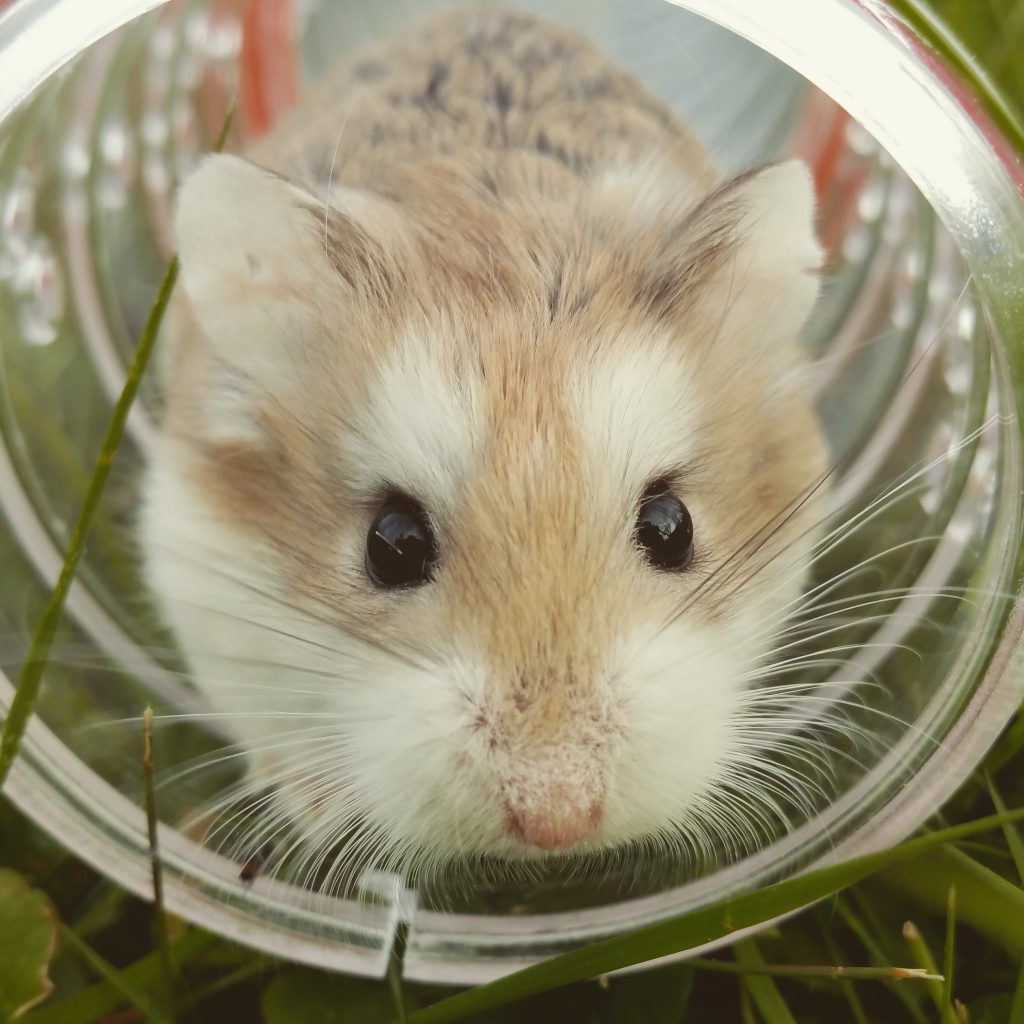A hamster may be the perfect pet for you if you cannot have a cat or dog. Hamsters are just as furry, and you don’t have to worry about having a lot of space to house them. They can also make decent pets for children, so long as there is always adult supervision! But before you get a hamster, there are things you need to consider, including how many you want to have.
Hamsters do best when they live alone. They usually don’t get lonely, and they can be territorial with another hamster of the same gender. Spaying or neutering a hamster is expensive and has risks; therefore, it is best if males and females are not housed together.
A hamster can be a terrific pet for someone who wants a furry friend but cannot commit the time and space needed for a dog or cat. They are relatively healthy and easy to care for. But if you really want more than one hamster, you may want to continue reading so that you can understand the intricacies of owning multiple hamsters.
Table of Contents
Hamsters Do Not Get Lonely
If you are used to having pets that get lonely, you may wonder if hamsters can get lonely, too. After all, dogs and humans (and even most cats) love affection and being social. But that is not the case when it comes to hamsters. They are used to living alone, and they do not enjoy having to share their living space with another of the same species.
It may seem like a strange concept to people, but hamsters can survive and even thrive when they are alone. You do not have to worry about behavior problems due to a lack of socialization with other hamsters. If you are particularly concerned about your hamster, you can interact and play with your pet regularly. Keep reading, and we will give you some suggestions on how to play with your hamster!
Hamsters Protect Their Territory
Hamsters are very territorial, and they can get aggressive when another hamster is in the same cage. If you put two hamsters in the same cage, they will almost always start fighting. These fights can even result in the death of one of them.

If you prefer to have more than one hamster, the simplest solution would be to have separate cages for them, each of them equipped with their own food, sleeping areas, and toys. Furthermore, you may even want to keep the cages in different rooms if you see any type of aggression. Whenever you take one hamster out to interact with it, you should leave the other in its cage.
Hamsters are used to living alone, and adding a new one to the mix can cause problems. The first hamster will likely become defensive. So, even if you have gone through the steps and managed to house two hamsters in the same cage, you should not add any more to the cage. If you have two hamsters living in one enclosure and one of them dies, a replacement “friend” for your hamster is not recommended. If you decide to add an additional hamster to your home after losing one, you should give the new one their own cage.
Should You Spay or Neuter Your Hamster?
One reason why animals like dogs and cats can live in pairs is that you don’t have to worry about unwanted litters if you spay or neuter them. Spaying and neutering dogs and cats are relatively common – and often encouraged. However, your regular vet may not be able to perform the same procedure on your pet hamster.
It might be a little tricky to figure out your hamster’s gender, but with a close examination of your pet, you should be able to do this yourself. Make sure you know the gender of your first hamster before considering adding a second hamster to your family!
While exotic animal veterinarians can and do spay and neuter hamsters, it takes specialized training. In most cases, the surgery is not worth the potential risks. Not to mention, it can be incredibly expensive, especially considering that hamsters only live for a couple of years. Your vet can tell you about the potential risks, such as bleeding and death, and if they think it is the right decision for your pet. If you decide not to spay or neuter your hamsters, it is even more crucial to keep the males and females separate from each other.
While the main risk of keeping a male and female together is mating, same-sex pairs can also have issues. Spaying or neutering a hamster may lessen their aggression. You will just need to decide if it is worth the risk and expense when keeping them in separate cages might be a much easier alternative.
Syrian Hamsters vs. Dwarf Hamsters
The Syrian hamster (also known as the Golden Hamster or Teddy Bear Hamster) is one of the most common types of hamsters when it comes to household pets. The other hamster often kept as a pet is a dwarf hamster. There are different species of dwarf hamsters – Campbell’s Dwarf Hamster, Russian Dwarf or Winter White Hamster, Roborovski Dwarf Hamster, and the Chinese Dwarf Hamster.
Differences between Syrian and dwarf hamsters include:
- Dwarf hamsters are smaller than Syrian hamsters. Syrian hamsters usually grow to approximately six or seven inches long, while the dwarf hamsters range from just two to four inches long.
- Syrian hamsters tend to be more aggressive toward other hamsters than dwarf hamsters; however, they are often more friendly with humans.
- Dwarf hamsters tend to be faster and more agile than Syrian hamsters.
- Dwarf hamsters are more likely to be able to live in pairs – if they are introduced properly.
How to Introduce Two Hamsters
Before you introduce two hamsters, you should create a new place for both to live. If you attempt to add a second hamster to your existing cage, it is even more likely that you will see fighting between them. It is better to get a new cage with new food, toys, and everything else so that both hamsters can be introduced in a neutral environment.
To introduce two hamsters to one another, follow these steps:
- Purchase a cage that is large enough for both hamsters to have their own space.
- Purchase a smaller cage that will fit comfortably inside the large one. The second cage will allow both hamsters to live in close quarters together with a barrier for safety.
- Place one of your hamsters in the larger cage, and the other in the smaller one.
- Every day or so, switch the hamsters so that they do not get
- territorial over one cage or the other.
- After a week, determine if your hamsters are getting along or being aggressive. If you have not seen aggression, you can try putting them in the large cage together and remove the smaller cage.

Continue to watch them closely and be ready to put the smaller cage back in to separate them if one or both hamsters start showing any aggression. You can repeat the introduction process a few times if needed. However, if the introduction is not successful, you will need to house your hamsters individually in separate cages.
Be sure to remember that, even though dwarf hamsters may be able to live in pairs in a cage, each hamster needs its own food, water, toys, and space within the enclosure. The harsh truth is that you may try your hardest and do everything right, but your hamster may still not want to live with another hamster.
Playing with Your Hamster
It is not necessary to play with your hamster each day for them to be happy. If you provide them with food and water, they will be just fine. But if you feel like your hamster is not happy spending all day in his or her cage alone, you can play and interact with them.
When you are able to supervise your hamster, you can let it out of the cage so that they can explore you and their surroundings. Remember to go slowly, as hamsters will bite if they feel frightened. You will need to take time to get your pet used to being handled.
You can give your hamster some time to run around outside of the cage, but make sure they cannot get stuck anywhere. It is not recommended to let it run loose in your house unless you put them inside a hamster ball. This ball will keep your pet safe while allowing your hamster to get exercise and explore their surroundings. Be sure to keep other pets out of the room if you choose to have your hamster run free, even if they are in a hamster ball.
Don’t expect your hamster to be too active during the day. Hamsters tend to sleep during the day and are more active at night. So, if you need a bit of relaxation after work, you can play with your hamster as it wakes up in the evening. You are likely to see more activity and excitement from your pet if you work around their schedule.
Playing with your hamster can be great for you and your pet, and it can make you more aware of any health problems that may appear. Hamsters do not tend to have as many health issues as other pets, but they can happen. The more you interact with your pet, the more you will know them, and the better you can detect when they are ill.
Final Thoughts
Hamsters can be the perfect option for someone who wants a pet but doesn’t think a cat or dog is right for them. Whether you have allergies or you cannot afford the time commitment for a dog or cat, hamsters are less maintenance. However, like all pets, they do require care and attention, and purchasing one (or more) is not a decision to be taken lightly.
If you feel that owning multiple hamsters is the route you want to go, please follow our recommended steps as you introduce two dwarf hamsters cautiously. It would be best to start with just one Syrian hamster if you are new to hamster owning. With some research and planning, adding a pet hamster to your home could be an excellent experience for you and your entire family!




